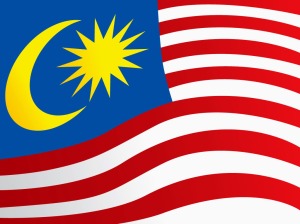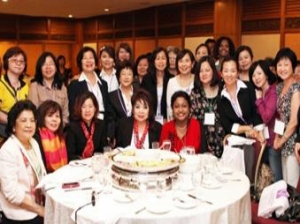 I stumbled upon Malaysia during my honeymoon in 1992. In Langkawi, I swam in the Lake of the Pregnant Maiden (and subsequently had two children…), and I enjoyed Malaysia so much then that I decided to take my backpack last December and explore more of the country. I found it like home, so I went back exploring again during the summer and made some business contacts. I would now like to build some business links with Malaysia as I found this country to be dynamic and growing fast.
I stumbled upon Malaysia during my honeymoon in 1992. In Langkawi, I swam in the Lake of the Pregnant Maiden (and subsequently had two children…), and I enjoyed Malaysia so much then that I decided to take my backpack last December and explore more of the country. I found it like home, so I went back exploring again during the summer and made some business contacts. I would now like to build some business links with Malaysia as I found this country to be dynamic and growing fast.
Malaysia is a developing nation, thus like some others, it is replacing mature economies as the world’s engine of growth. Western multinationals are setting foot in Kuala Lumpur, in search of new consumers far, far away from the dreadful recession in Europe. Malaysia does seem like a land of opportunities.
On the French side, Vinci is helping with construction, Bouygues with the metro. The local oil industry is dominated by Petronas but DTS, a French company specializing in explosion proof lightings and panels is present on the drilling side.
The main industries in Malaysia are the wood-based industry, the food industry, basic metal products (iron, steel and nonferrous metals such as copper, zinc or lead), electricity and electronics, engineering support, medical devices, petrochemicals and polymer, pharmaceuticals, and of course machinery and equipment – identified as one of the key areas for growth by the Malaysian government because of its high quality-low cost ratio in terms of production.
Industry sectors are as diverse and multi-faceted as the population of Malaysia. But the most interesting fact is that Malaysia progressed from an economy dependent on agriculture and primary commodities to a manufacturing-based economy based on a program called NEM (New Economic Model), set on a vision for 2020 (Wawasan 2020). This makes Malaysia the 14th most competitive country in the world according to a 2012 survey by WCY (World Competitive Yearbook, published by the Institute for Management Development).
The communication system is outstanding: one can access the Internet nearly everywhere, and I mean it… Even in the middle of the jungle! From my own experience, the network is even better covered than in France.
 Infrastructure is developing fast: the main airport KLIA is growing ever so swiftly (in the space of six months I could not recognize it!) and the roads are easy to travel on. Even in a jungly area like the Cameron Highlands, I found the roads wide and in perfect condition.
Infrastructure is developing fast: the main airport KLIA is growing ever so swiftly (in the space of six months I could not recognize it!) and the roads are easy to travel on. Even in a jungly area like the Cameron Highlands, I found the roads wide and in perfect condition.
In Kuala Lumpur, the city is changing so rapidly that even taxi drivers have problems finding their way around the city. This can be challenging, as one of the main cultural traits among Asians is to never say ‘I’m sorry, but I don’t know…’
I personally find this city exceptional and got lost on the two occasions I visited it. KL is located about 90 km away east of the coastline and is surrounded by jungle. Soon after setting foot in Malaysia, I went on a hike in the FRIM (Forest Research Institute Malaysia) park, just near the Batu Caves (north of the city), and despite having completed a triathlon a few days before in Paris, I struggled with the heat, humidity… and jetlag I guess. I also got very scared of the leeches!
So climate is not the easiest thing to get used to in KL, as humidity exceeds 82% and temperatures are mainly in the 30°C from my experience.
There are construction sites everywhere. New buildings are popping out like mushrooms and the most exceptional one I was lucky enough to visit was equipped with God knows how many swimming pools, gardens with mini-pools on the 37th floor… It was even possible to enjoy a BBQ party on the top floor overlooking the city (it felt like the 80th floor, but it probably just was the 50th floor I suppose…)!
 The rest of Malaysia is absolutely idyllic, but what I really enjoy the most is its people. Any conversation with and about Malaysians (that is, anyone born in Malaysia regardless of ethnic background) immediately leads into issues about the differences between the country’s majority Malay population and the sizeable Chinese and Indian communities. The stereotypes on how Malays are mostly rural, traditional people and the Chinese mostly urban and capitalists… Or how a Chinese minority received British education, and the second generation is now called ‘banana’ because its members are considered yellow on the outside (i.e, Chinese) and white on the inside (i.e, thinking as Europeans).
The rest of Malaysia is absolutely idyllic, but what I really enjoy the most is its people. Any conversation with and about Malaysians (that is, anyone born in Malaysia regardless of ethnic background) immediately leads into issues about the differences between the country’s majority Malay population and the sizeable Chinese and Indian communities. The stereotypes on how Malays are mostly rural, traditional people and the Chinese mostly urban and capitalists… Or how a Chinese minority received British education, and the second generation is now called ‘banana’ because its members are considered yellow on the outside (i.e, Chinese) and white on the inside (i.e, thinking as Europeans).
The Indians, the next largest group after Chinese, are divided by religion and linguistic background. A small English-educated Indian elite has always played a prominent role in Malaysian society (such as in politics) and a significant merchant class exists, but the largest part of the Indian community, imported as labourers by the British, remains a poor working class (often working long hours as taxi drivers or plantation workers).
There are also some ethnic minorities such as the Orang Asli, or ‘original people’. They have been forced to migrate from a nomadic life in the jungle to a more organized life, and they are not so well integrated in society as was originally intended. The ones I met had adapted well though, taking tourists inside the jungle to go and hunt the biggest flower on earth (the Rafflesia) while still keeping their traditional culture and a high respect for the jungle.
Generally speaking, the various ethnic groups all get along pretty well. It seems that a fruitful economy and a warm climate foster friendliness and hospitality. This blend of ethnic communities makes the Malaysian culture incredibly rich in terms of food or religion (even though Islam remains the official religion in Malaysia), which overall helps bringing up open-minded people. However, intermarriage seems to be fairly rare, or at least seems to happen more among Chinese and Indians, sometimes also mixing with Europeans.
 I experienced the same sense of openness and friendliness while making business connections. As a European, or a ‘white-face lady’, my status was regarded with welcome curiosity and many times was my photography taken, because a white person attending a business convention is often perceived as bringing it more credibility.
I experienced the same sense of openness and friendliness while making business connections. As a European, or a ‘white-face lady’, my status was regarded with welcome curiosity and many times was my photography taken, because a white person attending a business convention is often perceived as bringing it more credibility.
As for the women’s place in Malaysia, I identified many opportunities that, as a coach, I could work on alongside with them. It was lovely to see that women entrepreneurs (I saw many Chinese business ladies) are really hard-working, well-organized and truly have a vision. However in my opinion, they somehow lacked self-confidence in Malaysia, as compared with neighbouring Singapore where women can be prominent figures.
Malaysia being a Muslim country, it is accepted for a man of muslim faith to marry two ladies but he must first ask for an official authorization. I read in the local newspaper that about 1,500 families applied for this authorization last July. On the West coast fewer ladies wear the tudong (headscarf) but on the East Coast of Malaysia, it seems to be the norm.
In Part 2, we shall survey the Malaysian food culture and how coaching is so well perceived by the Chinese business community.


Thank you for a fascinating article on Malaysia. As a boy, I lived there for three years with my sister and parents.
Pascale Vernetti will be an excellent coach in such a thriving multi-cultural community. Many of us knew her as a business coach and career advisor when she lived in London. Through the Government Department, UK Trade and Investment, we are also watching developments in Malaysia and looking to see what services we might offer – not the same but complementary to those that Pascale excels in.
By coincidence, I have just clearing my parents’ house, prior to sale. I have found a Federation of Malaya (FM) nationality vehicle plate and the number plate for the same private car – an orange VW Beetle. With no-where to keep them, I’m planning to offer them to Malaysia House in Trafalgar Square.
It is best to take part in a contest for one of the best blogs on the web. I’ll recommend this web site!
thank you so much James :)! I work hard on my site/blog…so nice to see you like it !
Dear Pascale,
Thank you very much for the interesting article and for promoting Malaysia. I am proud of you. You are amazing …. so observant and learned so much about Malaysai: the people, religions, cultures, traditions and the economy & industries. You seem to know more about Malaysia than me. I am amazed by your insight into Malaysia and have signed up to follow your blog. Well done, Pascale. Be your best, KK, a Life Coah
thank you sooo much for your comment :)! really warmed my heart ! I shall be back ASAP to your beautiful country.
Well done! What a lovely and informative piece on Malaysia, cant wait for your second part!! 🙂
Hi would you mind stating which blog platform you’re using?
I’m looking to start my own blog in the near future but I’m having a tough time choosing between BlogEngine/Wordpress/B2evolution and Drupal.
The reason I ask is because your design seems different then most blogs and I’m looking for
something unique. P.S Apologies for being off-topic but I had
to ask!
I use wordpress